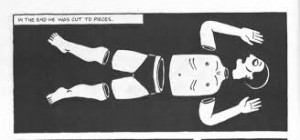It was not just another year, a benchmark. It was 2001, and for me, it was the beginning of something new, a transition. I was no longer living in the hustle-and-bustle of New York City; I was in the quaint, suburban town, known as Hastings-on-Hudson.
It was not just another month, an indication of passing time. It was September, the sign of new school year. I was no longer attending UNIS Pre-School, I was in Hastings, so I attended Hillside Elementary School.
It was not just any other day, a mere twenty-four-hours. It was Tuesday the 11th, my second Tuesday of elementary school. I was no longer the self-proclaimed “know-it-all” as I was in kindergarten, who thought the world was in his palms; I was a novice- a first-grader- excited to embrace this new experience.
It was Tuesday September 11th, 2001- the day that inextricably changed my life and countless of others, forever.
________________________________________________________________
The day began with a normal, painstaking awakening from my mother, a bland breakfast, and boring bus ride to school. The day was interrupted by a chaotic, evacuation from school. The day ended with a tenacious, yet failing attempt to complete my first-grade mathematics (Dear Calculus, sadly, it was never meant to be), reiki from my mother, and a racing mind that could not be put to sleep.
“What just happened? Why did this happen? Will it happen again?” I would ask myself over and over again, as I tossed and turned in my twin sized bed, protected by my Elmo comforter, cloistered next to Winnie-the-Pooh and Buzz Lightyear.
The next morning was different, and the ones that followed were as well; I awoke, sleepless, yet not irritable, and remained lost throughout the day. I was bewildered, and eventually angered, by my inability to find these answers. Mornings such as these persisted for the duration of the month. Gradually, however, they started to flutter away (for reasons that I still do not know today).
________________________________________________________________
4,755 days later, I am still devoid of the answers I was looking for, and I think I may know why.
This past week in my ASTU class, my professor assigned the article, “The Role of Interpretative Communities in Remembering and Learning, ”by Farhat Shahzad. In short, Shahzad’s article is about the influences that effect one’s memory of an event or time period, and the individual’s subsequent understanding of this memory. Shahzad along with others before her, refer to these influences on the micro-scale as interpretive agents and on the macro-scale as interpretive communities. Interpretive agents are the individuals that affect a specific community. Interpretive communities are the settings in which interpretive agents interact with each other, and can commonly be seen as a classroom, a home, and or, a place of worship. By and by, interpretive agents and communities affect each other mutually. The platform Shahzad conducted her research on was in relation to the War on Terror. What I found most interesting about her work, was that all of the participants she interviewed were able to articulate their opinion on the War on Terror, and the sources that have helped them form it. Their insight and understanding placed me in another quandary. And yet again, I find myself asking the same questions as I did thirteen years ago.
{Disclaimer: For those of you wondering if I have been living in a vacuum for the last thirteen years of my life, I’m sorry, but that’s just not the case. I do in fact know what happened on this horrid day, but I know merely the details. I will admit that it is unlikely that I will ever understand the psyche of a terrorist, but as terrorism continues to proliferate, and is widely considered as one of the major blights on today’s society, I still find myself asking, “What just happened? Why did this happen? Will it happen again?”}
Since 9/11, I have heard and been involved in cursory dialogue about how devastating the day was, but have never delved into the nitty-gritty of this ordeal. I would even go as far as to say, that I have never had an actual conversation about this day. I have never spoken about it to my parents, or to family members, and definitely not to my friends. I was too young, or-more-so, too oblivious to the media, to allow them to help me construct the requisite knowledge I needed to comprehend. My mother and I were too shocked, to speak about it at home (in retrospect, I have concluded, that we as New Yorkers were too close, emotionally and physically, to 9/11, that even the thought of speaking about it, became too overwhelming). My friends and I were also too young to be able to digest this on our own. I was without interpretive communities and consequently, was without the myriad of perspectives that would have enabled me to understand.
Yet, with Shahzad’s newfound information, maybe I could internalize this, maybe I will. I have, however, found closure in knowing that I can, with the help of interpretive communities; which truthfully, at this point, is more important than the answers I was looking for in the first place.
